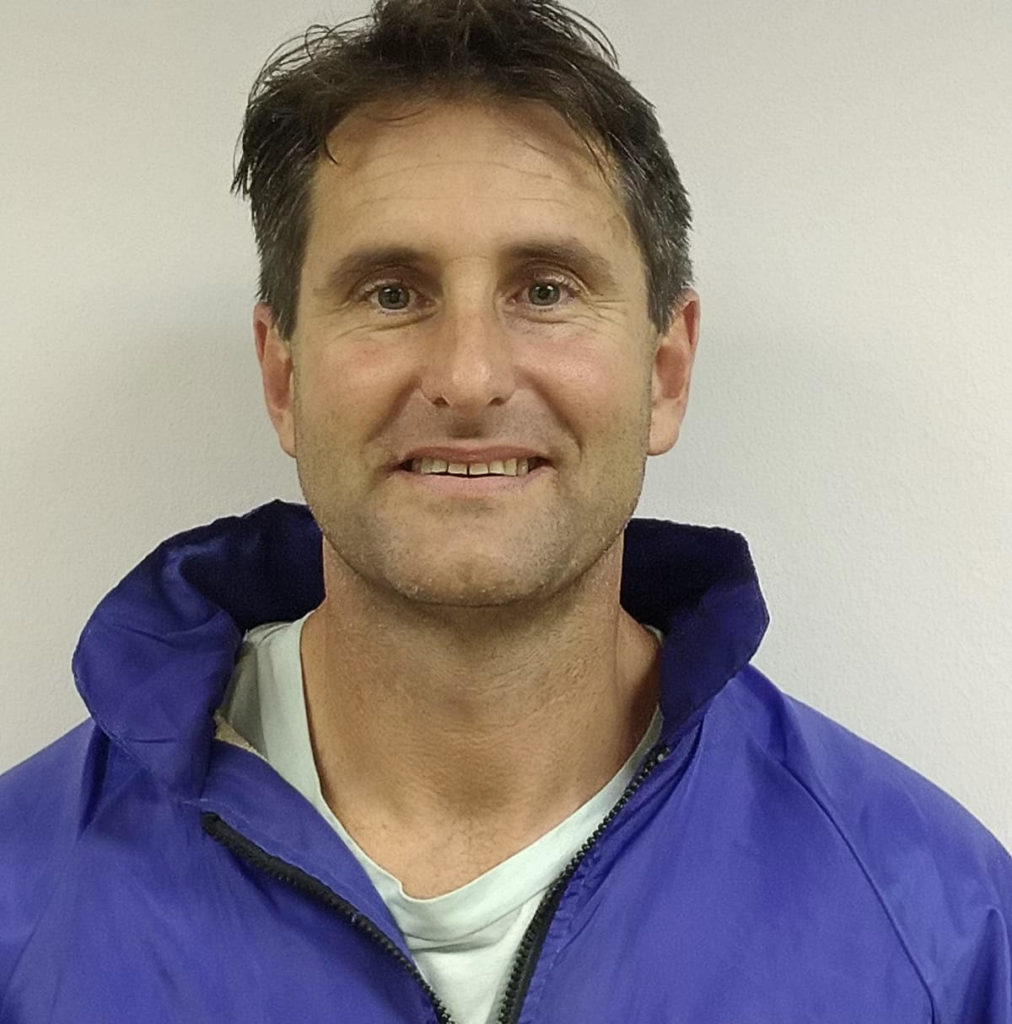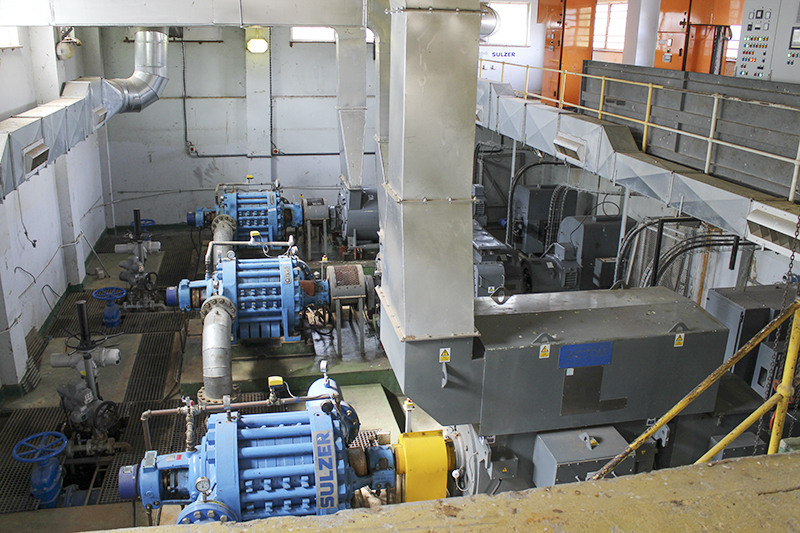By GEOFF EMBLING, Democratic Alliance (DA) Ward 4 councillor

Residents’ agitation is approaching boiling point, and at times their anger turns into hysterical pleas for water. Some households have not had water for weeks.
Crucial water infrastructure, valves, in particular, have not been maintained over the years, and it is alleged that newly laid pipes are not properly ‘compressed’ by specific contractors. Water pipes are exposed to huge pressure, and compression entails compacting the soil over newly laid or repaired pipes rather than throwing loose soil back into the holes. A problem that has affected the water infrastructure for years occurs after ‘water-shedding’ when the water supply is turned on too quickly. The ongoing rapid change in pressure is alleged to have been the primary cause of new breakages and leaks over the years.
The municipality has been warned hundreds, if not thousands of times by engineers and concerned residents, but it seems to have paid little attention. The standard municipal statement is “the water infrastructure is old and needs to be replaced”. Things came to a head at the end of 2021 when a broken mainline pipe at the end of Worcester Street worsened the water crisis many-fold. The municipalities’ response was the same; old infrastructure and the breakage would be repaired in a few days. An experienced engineer alleged that the Worcester street pipe is not “old infrastructure” but is part of a shoddily-done job on the relatively new “interlink” pipe joining Grahamstown West and East.
The engineer, who knows Grahamstown-Makhanda’s water system well, said it was obvious from the start that the municipality had gone about fixing the Worcester Street leak in the wrong manner. As work progressed, the municipal workers made the situation worse, and about two weeks down the line, Manco Business Enterprise was called to fix the problem. Manco has been contracted for the Phase 2 replacement of old asbestos pipes with PVC piping. It took roughly a month for the pipe to be repaired, even though it was temporary. Manco will continue the job and replace the Worcester St pipeline once the King St/Milner Street mainline pipe, which broke on 21 January 2020, has been “fixed”.
The King St/Milner St pipe is currently clamped whilst the municipality awaits the correct parts to fix it properly. A worst-case scenario is that it will be repaired properly in three weeks from now, around 23 February. In the meantime, it is still leaking severely, and water is running into the stormwater drain and down the gutter in Milner Street. According to the Director of Infrastructure, who has been battling a storm of infrastructure ‘casualties’ recently, the pipe cannot be clamped further if it worsens the break, and the valve cannot be closed because the pipe is currently supplying water to residents.
Residents have asked why the King St/Milner St leak might take three weeks to repair and whether we should not use local engineering firms to construct the parts and repair the water infrastructure. They have also enquired why Manco does not have piping and parts readily available and cannot source them in a matter of days.
If one “Googles” Manco Business Enterprise, one will see that it does not have a web page. There is very little information about Manco, which seems unusual for a company with a multimillion-rand contract to replace municipal infrastructure. Residents have requested that details of all contracts and tenders with the municipality be made readily available on the municipal website for public scrutiny. Residents pay rates and taxes to the municipality, which appoints contractors to fix infrastructure on behalf of ratepayers. There should therefore be complete transparency.
There are hundreds of water leaks around town, some of which gush out water when the pressure is high, and although some have been reported for years, the municipality refuses to fix them. Two examples are a leak in the mid-level reservoir which pours out, and the Drury Lane leak. The Drury Lane leak was ‘fixed’ a few years ago but broke the very next day, and a small river of fresh water has been flowing over the railway line and onto the lower Albany field, day and night, for years. It is so severe that it has caused its own marshland on one side of the field, with reeds and a whole ecosystem covering a quarter of the field and a lush marshland bog covering half of the field.
A few months ago, when the water pressure was relatively high, dog walkers could not walk in the centre of this large field without walking through water, and the leak is about 150m away from the centre of the field. The response was the same from the municipality; old infrastructure and fixing this leak would necessitate shutting off the town’s water supply for two or more days. This is no excuse, and leaks such as these must be fixed regardless. The wasted water from the Drury lane leak is piped from James Kleinhans Water Works treatment facility. The municipality pays a premium for each litre of treated fresh water, and the cost is passed on to the residents.
This brings up another point. In council last week, the chair of the Internal Audit Committee, Prof Plaatjies, noted that the municipality spent R7.9 million last year on wasted water from broken infrastructure. Furthermore, the municipality is in financial distress, and it defaulted on its Eskom payments, yet it spends over a million rand a month on overtime salaries for municipal staff.
It has been alleged, by the engineer mentioned above, that the electricity needed to pump R7.9 million worth of water, which leaks out of pipes and into the drain, would cost at least R7.9 million worth of electricity. This is because our water needs to be pumped to considerable heights from the low-lying Fish River (east side) and Howiesonspoort dam (west side). Therefore, it is disingenuous to state the water cost alone without considering costs incurred by electricity usage and wear and tear on pumps and treatment plants. Residents are starting to question whether it is not in the interest of a highly indebted municipality to coordinate one-day-off, on-day-on water supply to save these costs.
For the moment, Grahamstown-Makhanda has more than enough water to supply the whole town every day. The Fish River and James Kleinhans Water Treatment Works can supply over half the town’s needs, and Howiesonspoort dam and Waainek Water Treatment Works can top up whatever remains. Howiesonspoort dam is almost full, but herein lies another issue – the Howiesonspoort pump station and the mystery of the missing pumps.
Retief Odendaal, a DA member of the provincial legislature (MPL), and four councillors did an oversight visit to the Howiesonspoort pump station a few months ago. The oversight went ahead despite the Speaker of the council and municipal officials saying that councillors should not do oversight visits without officials accompanying them. This is absurd because the primary role of a councillor is to do oversight on behalf of the residents that elected them. Oversight aims to do spot checks and oversee the workings of the municipality. Asking permission from officials could potentially delay an oversight visit indefinitely and deny the residents answers as to how their rates and taxes are being used.
The Howiesonspoort pump station is a large double-story local keypoint building. MPL Odendaal and the councillors found it unlocked and unmanned, with its intricate electrical equipment upstairs flashing red and green. There was only one functioning pump downstairs. In September 2017, when Amatola Water ended its contract with Makana Municipality, all three pumps were in working order. An image of all three pumps can be seen in the Grocotts’ Mail September 2017 edition.

The pumps are multimillion-rand pieces of infrastructure, and each pump is connected to an equally large motor that equals the size of a small car. There are three parallel platforms in the building, each supporting a pump and its motor. The first platform supports a pump connected to its motor (the only working system), the second platform has a pump without its motor, and the third has a motor without its pump. When questioned, the municipality has said that the missing infrastructure has gone for repairs, and it does not have a timeframe for when it will return. Considering that the pumps were fully functional at the end of 2017 and there has been a severe drought since then, residents would like to know when they went for repairs, where they are being repaired and when they will be returned to the pump station.
Howiesonspoort pump station can supply half of the town with water when fully operational. This includes the whole western side of town, the CBD, Kingswood area, upper Fitzroy St, Oatlands North and Somerset Heights. The public is questioning municipal statements shared on community WhatsApp groups which claim that “water turbidity” and “mud balls” in Howiesonspoort dam are to blame for the lack of water coming from Waainek Water Treatment Works.
A competently run waterworks should be able to deal with turbidity by adding flocculant, which requires a level of accuracy. Another question also arises: how did the whole western half of town get an uninterrupted supply of water in the past during heavy rainfall if Howiesonspoort pump station needs to slow down its supply every time there is “turbulence” in the water? The statements by the municipality seem to mask the mystery of the Howiesonspoort pump station.
The same principle can be applied to the excuse of old failing water infrastructure. The current water crisis seems mainly due to a high level of incompetence. Infrastructure is “fixed” and breaks again where it was repaired; vast water leaks are not attended to; existing water infrastructure, valves and assets are not maintained, and contracts and tenders are given to companies that are not competent enough to keep the system running smoothly.
The Auditor-General and SCOPA reports have indicated that a critical source of the problem lies with the Municipal Manager. He is the Chief Accounting Officer and is responsible for the employment and accountability of the administrative staff, from directors down to municipal workers. Makana municipality has already had three disclaimers for the financial years of 2018, 2019 and 2020, and Prof Plaatjies indicated last week that another disclaimer is on its way for the financial year of 2021. A disclaimer is the worst form of finding by an auditor general.
The residents of Grahamstown-Makhanda have had enough of poor service delivery. The issues mentioned above will be raised at the council, media, and provincial and national levels.


